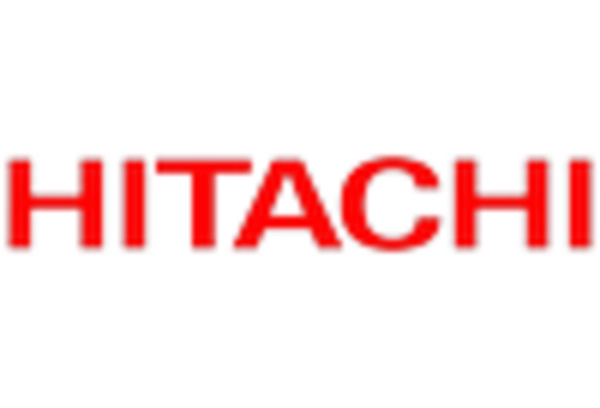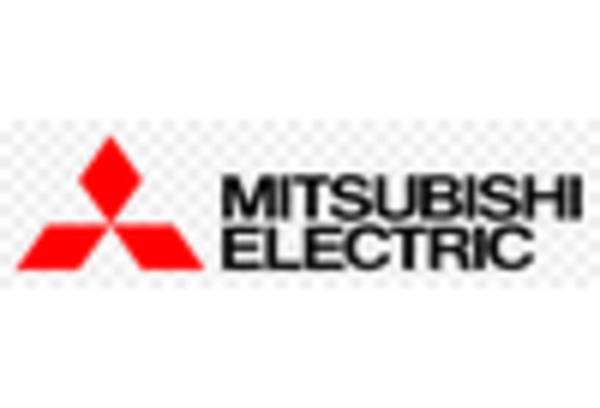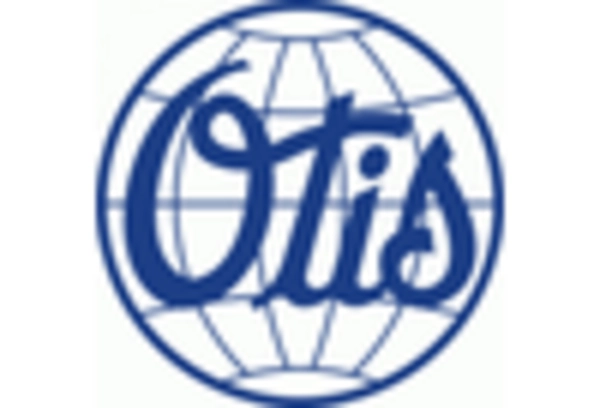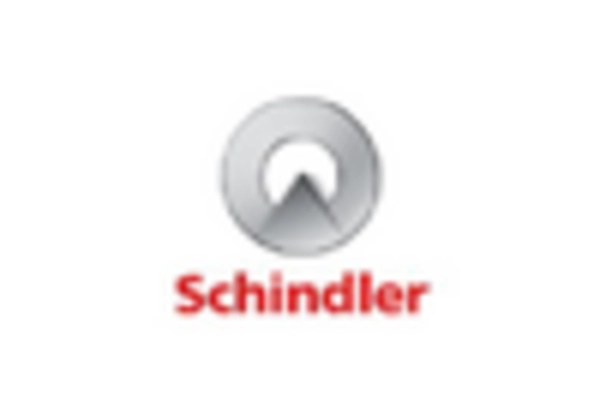Technological Advancements in Automation
Technological advancements in automation are significantly influencing the smart elevator market. The integration of artificial intelligence (AI) and machine learning algorithms into elevator systems enhances operational efficiency and user experience. These technologies enable predictive maintenance, reducing downtime and operational costs. In 2025, the smart elevator market is expected to reach a valuation of over $10 billion, driven by the increasing adoption of automated systems in commercial and residential buildings. Furthermore, the rise of smart buildings, equipped with interconnected systems, is likely to propel the demand for smart elevators that can seamlessly integrate with building management systems. As automation continues to evolve, the smart elevator market is poised for substantial growth, catering to the needs of modern infrastructure.
Rising Demand for Enhanced User Experience
The rising demand for enhanced user experience is a significant driver for the smart elevator market. Consumers increasingly expect seamless and intuitive interactions with technology, including elevators. Features such as touchless controls, personalized settings, and real-time information displays are becoming standard in modern elevator systems. In 2025, the smart elevator market is anticipated to witness a surge in demand, with user experience innovations playing a pivotal role. The integration of mobile applications that allow users to call elevators remotely or monitor their arrival times is likely to enhance convenience and satisfaction. As user expectations evolve, the smart elevator market must adapt to meet these demands, fostering a competitive landscape that prioritizes customer-centric solutions.
Government Regulations and Safety Standards
Government regulations and safety standards are crucial factors influencing the smart elevator market. In the United States, stringent safety codes and regulations mandate the implementation of advanced safety features in elevator systems. Compliance with these regulations not only ensures passenger safety but also drives the adoption of smart technologies that enhance operational reliability. The smart elevator market is expected to benefit from ongoing regulatory updates aimed at improving safety standards in vertical transportation. As authorities continue to enforce these regulations, manufacturers are compelled to innovate and integrate smart technologies that meet or exceed compliance requirements. This dynamic creates opportunities for growth within the smart elevator market, as companies strive to align their products with evolving safety expectations.
Urbanization and Infrastructure Development
The rapid urbanization in the United States is driving the demand for smart elevator market solutions. As cities expand and populations increase, the need for efficient vertical transportation systems becomes paramount. Urban areas are witnessing a surge in high-rise buildings, which necessitate advanced elevator systems that can handle increased traffic. The smart elevator market is projected to grow at a CAGR of approximately 10% from 2025 to 2030, reflecting the rising demand for innovative solutions in urban infrastructure. This growth is further fueled by government initiatives aimed at modernizing public transport systems, which include the integration of smart elevators in new constructions. Consequently, the smart elevator market is positioned to benefit significantly from ongoing urban development projects across major metropolitan areas.
Sustainability and Green Building Initiatives
Sustainability is becoming a critical focus in the construction industry, impacting the smart elevator market. The increasing emphasis on green building initiatives encourages the adoption of energy-efficient elevator systems. Smart elevators, designed to minimize energy consumption, align with the goals of LEED certification and other sustainability standards. In the United States, the market for energy-efficient elevators is projected to grow by approximately 15% annually, as more developers seek to incorporate eco-friendly solutions into their projects. This trend not only reduces operational costs but also appeals to environmentally conscious consumers. As the demand for sustainable construction practices rises, the smart elevator market is likely to experience a corresponding increase in adoption rates.

















Leave a Comment